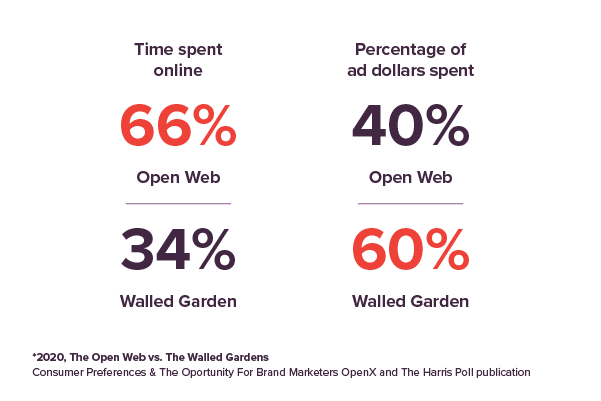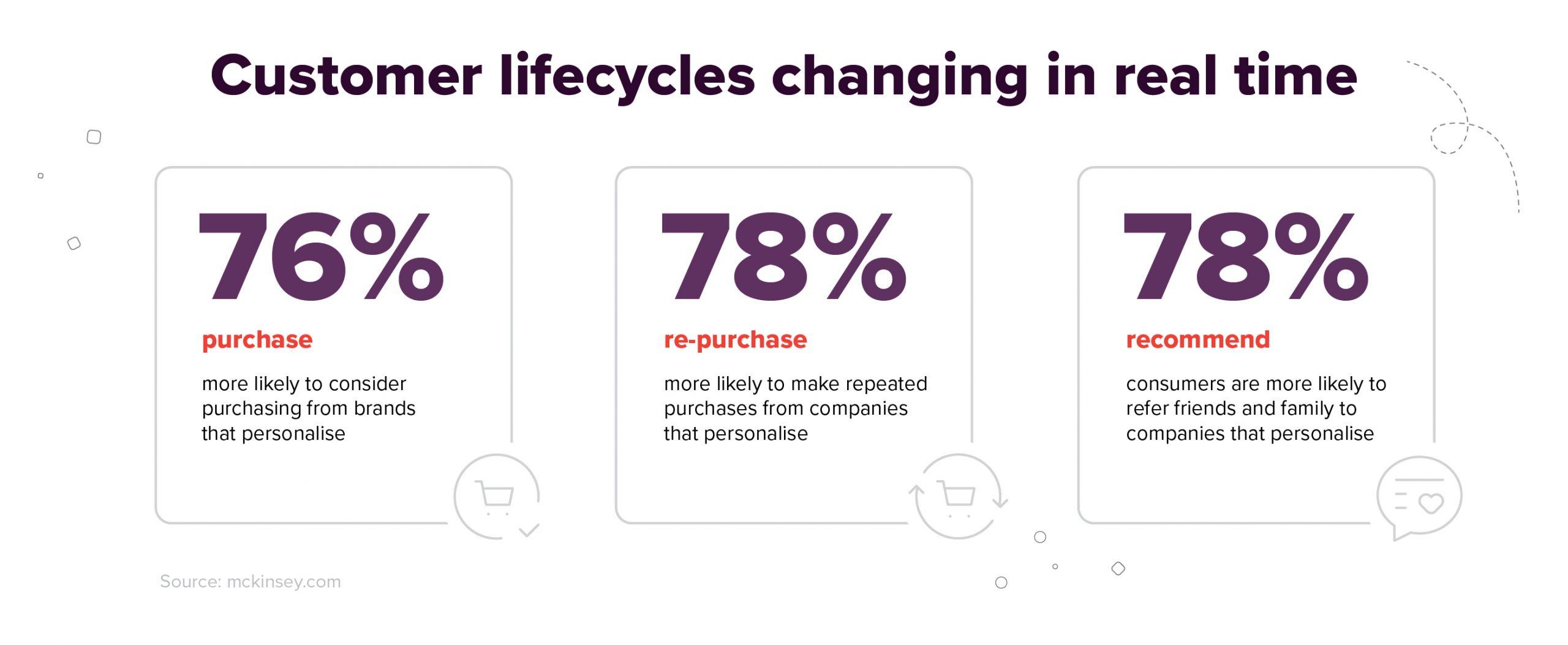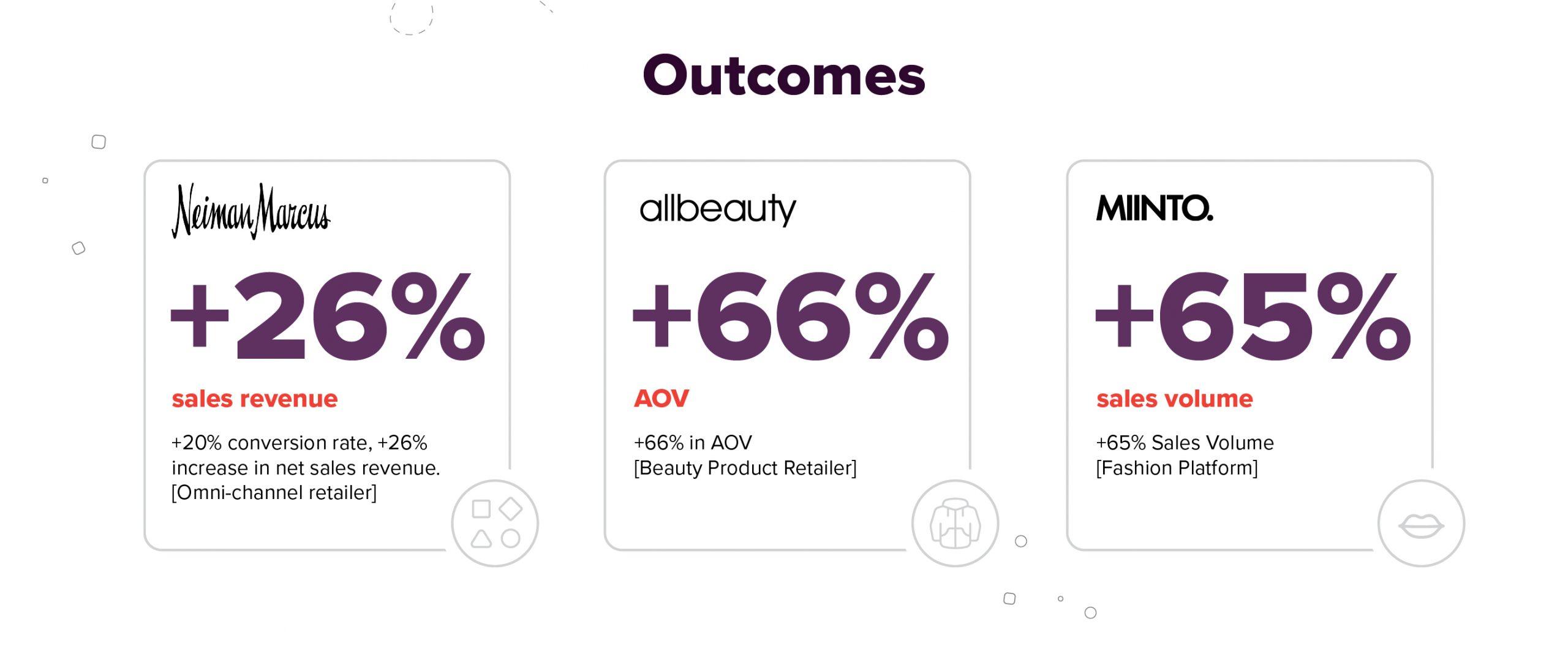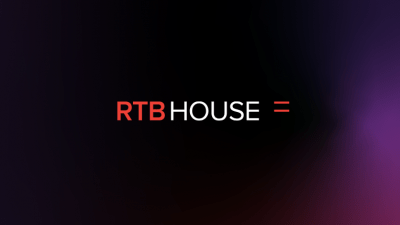Last Updated on: 28th May 2024, 04:56 pm
Have you ever downloaded the data Facebook has on you? Or Google? The sheer breadth of data collection has 86% of consumers worried, and this has led to a number of users leaving data-hungry social media platforms. It has also forced organizations like Google to do some soul-searching and adjust their approach to user data, notably by retiring third-party cookies.
This change, particularly the shift to a cookieless future, is hugely disruptive, and brands and advertisers often feel that they lack the tools to navigate the Open Web. This has bred a reliance on Walled Garden solutions, and many are now worried that they won’t be able to reach new users. In truth, users moving towards the Open Internet has created a unique opportunity for smart brands to establish a meaningful, healthier relationship with their users.
This very topic has been covered by Simon Trewavas, our Country Manager UK, at MAD//Fest, and we’ll be building on his presentation (check it out here) for this article. So, take a deep breath, and let’s dive into the Open Web, and how brands can best use it to their advantage.
Table of Contents:
- What is the Open Web?
- Advertising budgets don’t match user needs
- Why are brands still targeting Walled Gardens?
- How can advertisers navigate the Open Internet?
- Solutions to help brands understand the value of a consumer
- Tools to help brands deliver personalized content, without the privacy concerns
- New technology, the same great results
- Why wait? Learn how you can advertise on the Open Internet today
What is the Open Web?
There are two kinds of places users can spend their time online. The first is Walled Gardens. These are your Facebooks, Instagrams, and TikToks of the world, as well as a number of closed marketplaces and publishers like Amazon and YouTube. Despite giving you the tools you need to advertise within their walls, you can’t export data and are generally presented with aggregated metrics without detailed results.
The second is the Open Web. This is a broad definition that enables access to all information across the worldwide internet without any restrictions, beyond actually having an internet connection. This definition covers every online property that doesn’t fall under the Walled Garden definition. This includes sites like BuzzFeed, ESPN, the New York Times, or even apps like Words With Friends and Angry Birds.
The Open Internet is important because it’s where users increasingly want to spend their time. It also provides a more level playing field for content creators, publishers, journalists, and eCommerce sites. It is important for us as advertisers to support this concept, and prevent big-tech monopolies, but there’s one problem.
Advertising budgets don’t match user needs
For some time now, there has been a mismatch between the way users spend their time and advertisers allocate their budgets. This is counterproductive, as users are significantly more engaged on the Open Internet, with 58% reporting that they are more curious and open to learning more about brands in that space, compared to the 25% who are switched off when using Facebook.

This situation is likely to become more unbalanced as users increasingly distrust data-hungry platforms like Facebook. With that said, there are positive signs for pro-privacy advertisers. Users increasingly want strong privacy protections, but also want to take advantage of personalization, so long as their data is respected.

Why are brands still targeting Walled Gardens?
Given this disruption, Walled Gardens should be even less enticing, so why are advertisers still committing such a huge portion of their ad dollars to them? Often it is simply because they are familiar with them. Walled Gardens make it as easy as possible to advertise to their pool of users, and some advertisers may feel that they are unequipped to navigate the Open Web.
There is a perception that the Open Web is a black box. Marketers worry that they will waste ad dollars and will ultimately reach users completely uninterested in their offering. This concern has risen as the cookieless future draws near.
The removal of third-party tracking cookies has fundamentally changed the Open Internet advertising landscape. At first glance, this new world can feel a bit like the Upside Down from Stranger Things; disorientating, confusing, but just familiar enough to be unsettling.
Simon Trewavas underlines the importance of constant innovation:
To get through this disruptive time, you’ve got to innovate, and that’s really at the heart of what we do.
The problem for Walled Garden-focused advertisers is that they’re increasingly fighting over jaded, disinterested users. This leads to high prices and, ultimately, lackluster results. As during any time of disruption, advertisers will need to innovative, which in this case will lead them to the Open Internet in order to remain competitive.
It is important that advertisers actively engage with the Open Web, cookieless technologies, and other privacy-friendly initiatives. Users want to have the freedom to find their own content, engage with ads on their own terms, and generally define their own online experience. By positively engaging with the Open Internet, advertisers align themselves with user needs, and, as a result, everybody wins.
But advertisers need a guide to navigating the Open Internet, which is where we come in.
How can advertisers navigate the Open Internet?
As with many difficult things, the key to navigating the Open Internet is the right tools. You can’t go diving without a scuba tank, and you can’t advertise on the Open Internet without ways to gather and interpret data.
This is exactly the challenge that RTB House identified when we built a team of 45 people to build solutions specifically to understand user intent and value on the Open Internet. This needs to be done without personally-identifiable data, without cross-site tracking cookies, and without making it harder for brands to reach potential consumers.
Solutions to help brands understand the value of a consumer
To that end, our team worked closely with W3C, and the Google Chrome Team, to build a solution that can do just that. The result was two proposals by RTB House for FLEDGE: Product-level TURTLEDOVE (PLTD) and Outcome-based TURTLEDOVE (OBTD).
PLTD enables us to determine consumer interests in products on a group-level, without needing a treasure trove of third-party personal data. This lets us determine what ads to show them.
OBTD helps us understand the value of that person to a business. This enables brands to set an appropriate bid price for higher, or lower, value users without compromising user privacy.
You can read more about these solutions here.
Tools to help brands deliver personalized content, without the privacy concerns
Now that we understand which users we want to target, and their interests, the next step is figuring out how to advertise to them. Since we’re now dealing with large amounts of non-standard data from a variety of sources, the first thing we need is a good algorithm.
Many ad-tech companies use machine learning for this purpose, but it has one major drawback: it is rules-based. This means that it can’t learn effectively from non-standard data, and it can only really do what it’s told. Instead, RTB House has worked to implement the more advanced Deep Learning technology, which is approximately 2.5 thousand times faster than Machine Learning solutions.
This big difference is in how the technology is structured. Deep Learning is designed to mimic the way human brains function. It processes data through increasing layers of complexity, looking for patterns, and then using those patterns to improve its operations in the future.
This is why every single one of RTB House’s services and technologies is powered by Deep Learning. For example, it enables our ContextAI solution to scan 95% of the web and determine where your consumers are actually spending their time. This even allows you to reach audiences who may not be directly searching for you, but who would be interested in your product, for example, someone interested in a fancy bourbon would probably also be into a cocktail set or whiskey tumblers.
This same technology can also be used to determine what product a user should be shown during a retargeting campaign. For example, you might have a group of users who have recently purchased a bike. In the past, these users would continue to be bombarded with adverts for new bikes. With Deep Learning, we can determine that they might be more interested in bike locks, helmets, or other pieces of bike equipment.
New technology, the same great results
This sounds great, but what does the data say? RTB House always takes a data-led approach, and we are very transparent about what is happening within our campaigns. To date, these new cookieless approaches have proven very successful, across a variety of metrics.

Whether companies are looking to boost the number of views, sales revenue, or average order value, RTB House Deep Learning tech has given them outsized results. The best part? With every campaign we run for a client, our algorithms become better at understanding what their customers need, providing constant improvements.
Why wait? Learn how you can advertise on the Open Internet today
Advertising on the Open Internet makes a lot of sense. Not only are brands getting access to a wider pool of highly engaged users, but advertisers are also supporting a broader ecosystem of content and information. This helps to reduce the reliance on Walled Garden providers, and ultimately makes a better, more privacy-friendly internet for everyone.
Want to learn more? Then remember to check out Simon Trewavas’ excellent presentation at MAD//Fest. And if you’re hungry for more, why not contact us here and set up a call with one of our in-house experts? Discover how your brand can make the most out of Open Web opportunities.





